Melodrama
Generally understood and used in this context:
“Melodrama is a [fiction] based on a romantic plot … with a constant appeal to the emotions of the audience/reader … the characters (who are either very good or very bad) are rewarded or punished according to their [respective ‘very good’ or very bad’] deeds. (A Handbook to Literature, C. H. Holman, p. 280)
Melodrama … rigs the consequences of actuality in manipulating the plot toward escape, reprieve, or rescue, and culminated in a happy ending. (Orientation to the Theater, T. W. Hatlen, p. 86)
A Cowboy-esque Melodrama set in Southern-Italy
The plot of Vendetta Mountain follows the enduring melodramatic Manichaean early Cowboy ‘dime novels’, comic books and movies: quintessential good guys and bad guys. Often the basis of the conflict involves a fair-haired maiden captured by the bad guy and liberated by the good guy.
In movies, good guys are clean-cut and generally wear white hats, and bad guys are always unshaved grubby looking wearing black hats.
Bob Steel and Gertrude Messenger in the 1932 Riders of the Desert is a good example of this motif. In the pictures below, notice: Bob’s ‘clean cut’ look and white hat, and Gertrude is a fair skin (Nordic) blond.
Compare with the picture below of the black-hatted ‘grubby’ bad guy “Hashknife.” (played by: George ‘Gabby’ Hays, before the later transformation of ‘Gabby’ into a good guy ‘sidekick’ and 1950s children’s cowboy television host).
The action of the movie’s plot is driven by the conflict generated by bad guy “Hashknife” kidnapping the Messenger character, and Bob the good guy rescuing her.
Vendetta Mountain differs from early cowboy movies only in that the there are no symbolically colored hats. With the exception of the hats, the primary characters of Vendetta Mountain are cloned from movies such as “Raiders of the Desert.” The plot can be characterized, as the Lone Ranger would say: “Hi-Yo Silver and Away”
I will not describe nor summarize the plot; least I spoil the story for those yet to read Fiore’s book – although the author provides a brief plot description at his site: http://www.carmenanthonyfiore.com/.
Moreover, given the inherently simplistic nature of melodrama there is not much one can say about the plot or characters. As noted above, such plots are always about good guys confronting bad guys; a fair maiden’ put into harms way by the bad guys; she is saved by the good guy; good guy and fair maiden live happily ever after.
However, any work of art (high or low-brow) manifests the cultural values and social milieu of the society, in which the work is produced. Accordingly, a work may not be aesthetically significant, nevertheless may prove to be invaluable to the cultural historian.
It is from such an historiographic cultural point of view that Vendetta Mountain should be seriously considered by students of southern-Italian American culture.
Culture War
The cultural determinates of southern Italy and southern-Italian Americana cannot be understood without reference to the post-Risorgimento Culture War northern Italians waged against the people of the South and their American progeny. This War and its effects in southern Italy have been brilliantly described by Pino Aprile’s book Terroni .
There has yet to be written a comparable culture war history of southern-Italian Americana describing the nefarious effects Northern Italy’s operatives in universities and mass media have had on southern-Italian Americans.
What is a Culture War? In short, Aprile captures it eloquently:
“I had no idea that I was a Southerner…through Cultual Lobotomy, the South was deprived of its self-awareness; its memory … We no longer knew who we were. (Terroni, p.4, 8 emp. +)
Identically, today Americans of southern Italian descent have no self-awareness or memory of their Southern Italian history and culture. They think of Italy as a homogenous culture defined by northern Italian history and culture (e.g. Renaissance).
Culturally, we no longer know who we were or are.
Worst … We have come to think of the South in terms of primitiveness. For example, a women, who was the daughter of Calabrian immigrants and spoke fluent Calabrian, would only speak English when on vacation in Italy because she “did not want to sound like a country bumpkin”.
This concept of southern primitiveness is captured by the title of Aprile’s book.
Terroni
“The word ‘Terrone’ is an offensive term used by people in northern Italy in order to describe those from southern Italy. With an etymology tied to the term ‘terra' (dirt)… an English equivalent such as ‘Dirtball’… ‘Grease-ball’ …” (Terroni Publisher’s Note, emp.+)
Note: In America, the pre-1920 immigrants, their children and post-World War II grandchildren were frequently characterized as ‘Grease-balls’ (e.g. Google term for multiple references).
This idea of the Southern Italians being ‘dirty’ and ‘greasy’ is repeatedly presented throughout Vendetta Mountain. Just a couple of examples:
“Attilio: the odor of urine and feces emanating from his body…heavy odor of sweat-stained clothing and unwashed oily hair” (e-book location L 276)
“Luigi: sour body odor and oily hair was offensive…Cathleen tied to hold her breath when he was close to her…She smelled his sour body odor. His breath reeked of wine…she could see the blackheads on his porous-skinned face (L 1714)
Now I know why my grandfather left
Godforsaken Southern Italy
The clash between the good guys and bad guys defines the plot and determines the action of Vendetta Mountain. However, the juxtaposition of southern-Italian American Donato "Donny" Belardo and his Irish American wife Cathleen Ryan Delardo defines what I judge to be the book’s theme – namely:
Southern-Italy is a degenerate place …
No wonder and thank god our grandparents came to America.
Whereas Cathleen hates southern Italy from the start of their visit, Donny is wildly excited about visiting the land of his ancestry. However, by the end of the book he can’t want to get back to the “good ole U S of A”.
Essentially, the theme of the book (the 'narrative arc’ that unifies the plot), apart from telling a time honored totally predictable cowboy-esque story, is to destroy the nostalgic idea of an idyllic southern Italy and thereby perpetuate the Culture War myth of a superior northern Italy.
Unlike books such as Under the Tuscan Sun, where northern Italy is represented as very much ideal and picturesque (e.g. one reviewer writes: "One must linger over the poetic descriptive flow, the picturesque countryside coming to life on each page") ...
the South of Italy in Vendetta Mountain is (in Cathleen’s words) “A desolate, strange-looking wasteland”. At best, the South is (in Donny’s words) “beautiful in the awesome bleakness.” (L 43)
Donny is the American grandchild of an Italian immigrant from Montenovo – a fictional town in vicinity of Pignola, Basilicata, southern Italy.
(see map below for approximate location – note: I assume Montenovo is a fictional name; I can’t find a reference to it in southern Italy with Goggle search. Although, there is a Montenovo di Montiano in Northern Italy. Pignola is specifically referenced in the text).
Donny is “seeking out his Italian roots”. He says:
“At least six Belardo generations can be traced back to Montenovo. And I don’t know how many on my mother’s side.” So – I’ve got to see it …” (L 57)
“This is my dream of a lifetime. My genes are home. I can feel them stirring deep inside me. Just wish I could have brought my grandfather with me. He would have loved it so much. To be home again. … (L 132)
However, the first clause in the book captures the Culture War theme. Irish Cathleen says:
“This is a big mistake leaving Sorrento for these wild-looking hills and mountains.” (L 22)
Specifically, the “big mistake” is coming to the heart of southern Italy – i.e. Basilicata Region.
Notice the juxtaposition of Sorrento with Basilicata. She does not have a problem with Italy per se, rather the interior of the South. She goes on:
“What a desolate, strange-looking wasteland. Haven’t seen a really big tree in miles. Nothing but scruffy vegetation, rocks and chalky ground.” (L 39)
“I think this whole isolation thing is depressing. I feel trapped up here already. Gray-white cliffs, eroded crevices, pockmarked alleys, looming mountains – its all so un-Italian, after the lush green and blue of Sorrento and Capri.” (L 123)
Basilicata is "so un-Italian"!
In just a couple of clauses, Fiore manages to capture the whole cultural history of post-Risorgimento Italy. As they use to say in the nineteenth century:
“Italy ends at the Garigliano”
In short, the southern portion of the Italian peninsula is not ‘really’ Italy. The real Italy is in the North and the tourist resorts on the southern coastline.
The criticism of the South does not improve when the Donny and Cathleen pass from the countryside into the town. Indeed, it gets worst – the Piedmontese could not have put the denigration better.
Again, the Irish lady is the twenty-first century voice of the Piedmont.
“If this isn’t Dogpatch, it’s not far from it…Why were so many women standing around that fountain filling jars and buckets? Don’t they have indoor plumbing?”
The narrative picks up where Cathleen’s dialogue leaves off:
“The houses…sagging roofs…front walls sported lighting-shaped cracks wide enough for an over weight rat to crawl through…Doors missing or hanging open on one hinge...only one room…
“Women sat next to open doorways …some nursed babies from exposed breast, which Cathleen thought was disgusting…others gossiped or hollered at restless children..
Women stood in patient silence around the fountain watching its steady stream of water fill a terra-cotta jar, with other jars and metal buckets…
“Old men dozing …ever-sniffing, ever-scratching mongrel dogs, loose roaming chicken … grunting pigs…goats
“Distinct aroma of decaying matter, plus human and animal waste. The pig was in competition with the dogs for the scraps of garbage strewn about the street… (L 153- 187)
“…row of aged houses that still passed for human living quarters (L 268
Moving further into the denigating cornucopia from negative descriptions of the countryside, to negative descriptionsof the town, we are then presented with negative descriptions of the house where Donny and Cathleen will live in during their weeklong visit.
“Their ‘new’ home did not have a front window…a naked bulb dangling from the ceiling … iron stove, wash bowl, no faucet … most houses had no inside water drains … they pour dirty water down the slop chute … floors paved with rough stones … rooms smelled of must, stale air and age … pile of sticks next to the stove for heat …woman bring them water in jars twice a day from the public fountain … no inside toilet … lidded pot in bedroom (peeshadude) to winky-tinky in … no shower or tub … (l 232)
The exasperated Irish American Cathleen wails:
“Is this Dogpatch, or isn’t it? Complete with flies already. I’ve never seen so many goddamn flies in my life! ... complaining of insect bites on her legs, the town was full of fleas as well as flies ” (L 240, 392)
Nevertheless, the southern-Italian American Donny is still feeling positive about his “dream of a lifetime”. He took:
“A sight-seeing, picture-taking walking tour of the twisting, crooked, seldom level streets to satisfy his insatiable curiosity concerning his biological, geographical and sociological roots. (L 376)
Full Circle
Nevertheless, by the end of the book, Donny had come ‘full-circle’ completely rejecting any virtues in the South and embraced Cathleen’s Dogpatch attitude about southern Italy.
“Donny confessed to Cathleen that he felt more American and less Italian than ever before in his life and was glad to be getting home. Italy may be the land of his ancestors and his roots, but his country of choice was America, and his family American never mind the vowel on the end of the Belardo name. (L 1963)
(note: It was not uncommon for pre-1920s immigants to drop the vowel at the end of their names so as to sound American. Also, no vowel at the end of Cathleen's maiden name - Ryan.)
Conclusion
If you like low-brow melodramatic crime stories, as I do, this is a good read. In the context of that genre, it is well written story. Albeit not as good as other southern-Italian American melodramatic crime novelist such a Lisa Scottlione and Frank Lentricchia, and certainly it is very amateurish when compared to the high literary crime work of John Domini; nevertheless as old fashion ‘good-guy’ vs. ‘bad-guy’ stories, this is a worthwhile work.
However, as a manifestation of the Northern Italian Culture War against southern-Italian Americans it is absolutely MUST READING, for it is an excellent example of how the negativity that the north heaped on the South for the past 150 years has not been limited to southern Italy. The 150-year denegation of the South describe by Pino Aprile, has effected the descendants of southern Italy in America.
The philo-Northern Italian literati and promineti in America continue in the post-Risorgimento tradition of promoting and glorify northern Italian history and culture at the expense of the South; thereby instilling in the minds of southern-Italian Americans the idea that the South is not the ‘real’ Italy; rather, it is a primitive and gangster-esque aberration of the genuine Italy north of Rome.

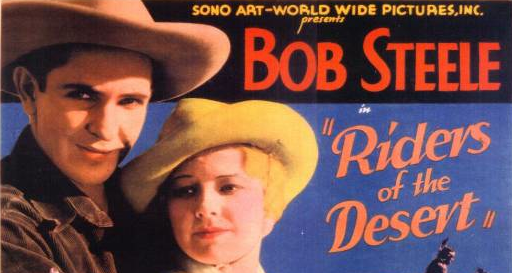
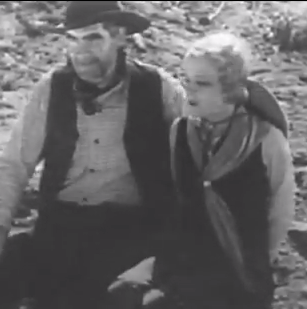
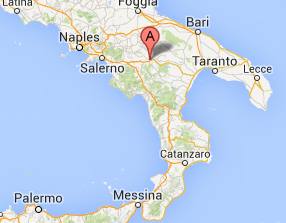



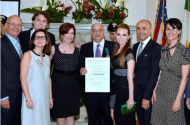
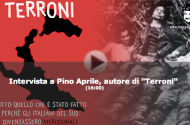

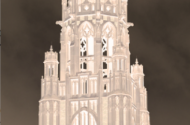
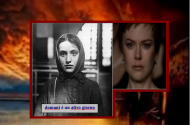



Review of VENDETTA MOUNTAIN
I thank the reviewer for the time and effort in writing the review about my novel. Of course, as the biased author, I don't agree with everything mentioned in the surprisingly lengthy review. When I wrote the novel I was not in "cahoots" with any previous Northern Italian opinions or conclusions of what those people think of Southern Italians. Even in the USA the descendents of Northern Italians still think they're better than we descendents of Southern Italians, who were the least welcome of all European immigrants. My father, who came with his family when a youngster to America in the early 1900 years, said they soon realized they weren't wanted. And after growing up and entering the workforce, I met prejudice myself. I was shooting for realism during the writing of my novel. Maybe I got carried away with the description, but it wasn't meant to show displeasure, just the differences between the classes and the lingering hatreds and feuds that never seem to die. But I never thought my story was low-brow or inferior to any other novel written about the South of Italy. It was just an effort to tell the truth as I saw it and felt it and tried to be faithful to the stories told to me by my relatives about the "Old Country." Again I thank the reviewer for the extensive review of VENDETTA MOUNTAIN. I have other stories I told about Italians visiting Southern Italy. I recommend my novel ITALIAN INTERLUDE. It's available as an e-book from Amazon's Kindle e-book store and on other hand-held devices. (ISBN: B0073GQMOM) My private-eye series (six titles so far featuring Tony Avanti) is also available on the Kindle and reveals some of the problems of being Italian-American in America: THE DEVIL'S WORKSHOP, AVARICE CAN BE DEADLY, THE DREAM LADY, TILL DEATH DO US PART, ITALIAN INTERLUDE, and SPORTS CAN BE LETHAL.